
SPECIAL PLACES

Minto & Area
|
  |

Before
Minto …. there was Heaslip
Healslip had existed as a Post Office since the earliest Pioneer days.
In the early 1880’s the main road from Old Deloraine to Brandon was the
Heaslip Trail named for Sam Heaslip who established the trail and used
it to deliver the mail. Heaslip (pronounced hays-lip) came from Ontario
in 1881 and homesteaded near where Minto would later be located. Mrs
Heaslip was the first woman of European heritage in the district that
soon bore their name.
In 1882 Sam received a contract for mail delivery. Each week he picked
up the mail in Brandon and travelled to Old Deloraine where mail for
more far-flung locales was picked up by others.

The Heaslips's home served as a Stopping Place and Post
Office. School classes and Presbyterian services were
sometimes held in the upper floor of a granary on their farm until
Riverside School was built nearby.
In 1898 when the Canadian Northern Railway established the town of
Minto, existing post offices, and the beginnings of villages that had
grown up around them, were eclipsed by the new town.
But the name Heaslip would live on – it was reborn as a railway stop
when the Great Northern began operations in 1906 and developed into the
beginnings of a village, with a station and general store.
A Big Project
Just past Heaslip the railway builders had to cross the deep, wide
Souris River Valley. The line angled westward to Bunclody. Along the
way it had to cross two deep ravines that ran into the river form the
west.
They built temporary trestles and dumped in fill to create a road-level
earth dam, complete with huge pipes designed to let the runoff through.
The pipes soon broke and had to be replaced with concrete tunnels two
metres square - still quite visible today. Local childhood adventures
often included a dare to go through these tunnels.
Minto is Born
Named after the Governor General, Sir Gilbert Elliot-Murray-Kynynmound,
4th Earl of Minto, was started when the Canadian Northern
Railway came through in 1898.
Farmers were now able to ship their grain and livestock closer to home
instead of hauling to Boissevain or Hartney.
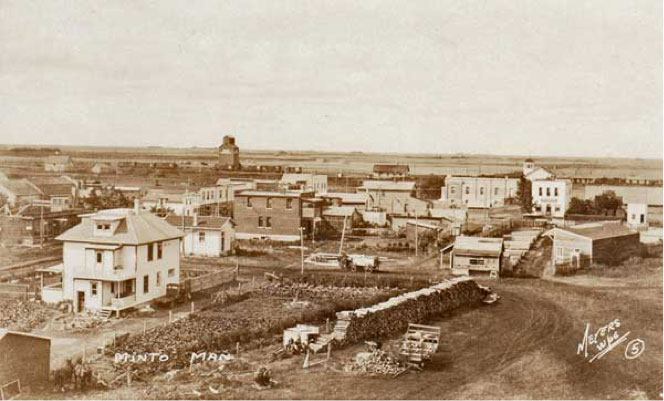
The town soon had all the shops that a community needed to thrive.
These shops included everything from a butcher shop to a Chinese
laundry shop.
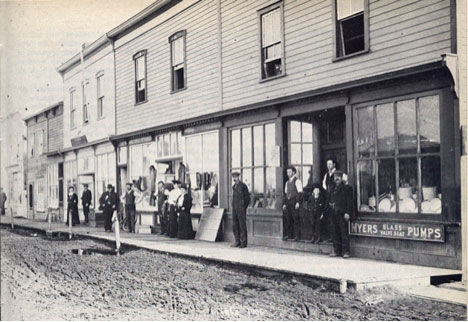
Main Street 1906
In 1906 a second rail line from the North Dakota to Brandon made Minto
an even busier place.
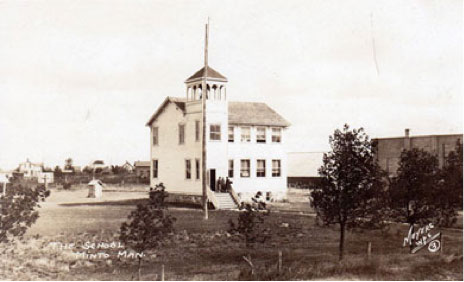
Minto School was established formally in the village of Minto in July
1901, becoming Minto Consolidated school in 1962. The present
red-brick school dates from 1928. The old school bell is
contained in a monument nearby.
On October 14, 1930, this booming town met a harsh reality that many
communities had to face in those days. A huge fire swept through
the business section and razed everything in its path.
Like all small towns in the 1930’s, some of the businesses that had
been very important in the early days, were no longer needed. People
could take their cars to larger towns to shop. So many of the shops
didn’t rebuild and Minto’s “downtown” was no longer as busy. It did
however keep its basic services and continues to serve the local people
today.

Minto & Area Highlights

Former R.M. Office
South Railway
347.A.1 / 1932
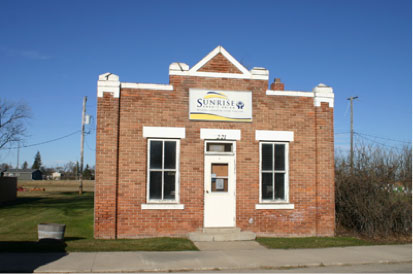
The R.M. of Whitewater used this modest but stylish building for
decades - followed by the Sunrise Credit Union.
It features nice trim and details and an attractive roofline facing the
street.

Former Presbyterian Church
South Railway
347.B.1 /1903
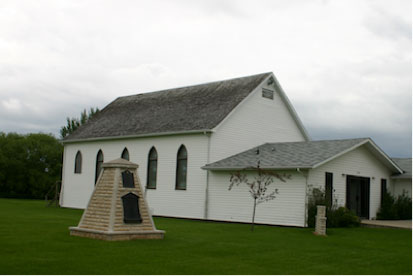
The Church was originally located on the corner of Church and Railway
Avenue.
When Methodist and Presbyterian Churches united, they drew lots to
select which church would be used.
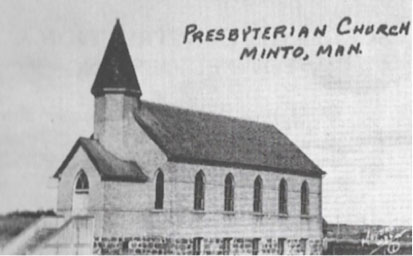
It was extensively renovated in the late 50’s.

Berbank Union Church
NE 35-6-19
1919 / 347.B.2
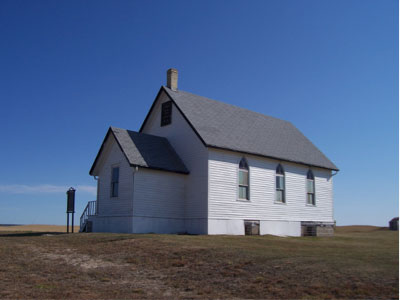
Wm. English donated the building site to the Berbank Union
Congregation. It was built with voluntary labour. It closed in 1966.
The church was used for scenes in the movie “For the Moment” starring
Russell Crowe.
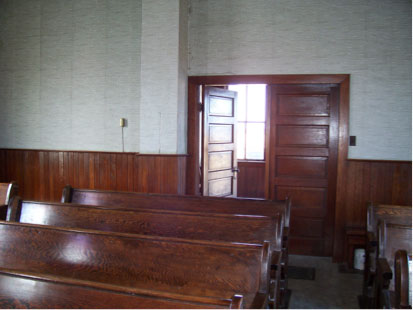

House
Alexander Street
347.C.1 / ca. 1905
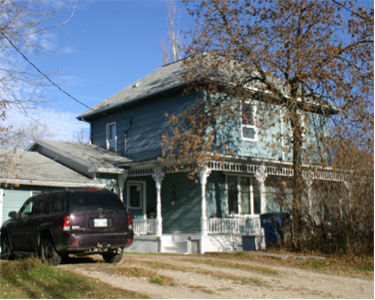
This well kept 4-square style frame house has been well-kept and
renovated.
It retains its wraparound veranda with nice trim and its small roof
dormer

Former Gardiner Saddlery Shop
South Railway & Johnson St.
347.D.2 / 1967
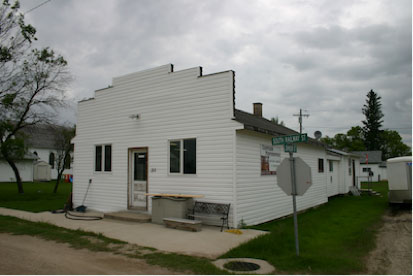
Don Gardiner replaced his earlier shop with this building.

Sparks
House
122 Johnson Street
347.C.6 / ca. 1910
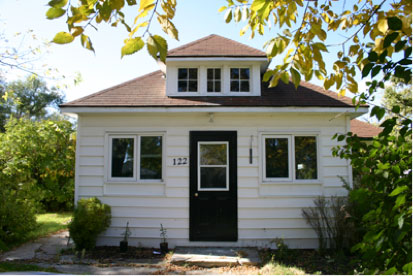
William Sparks was a well-known Minto businessman and butcher.
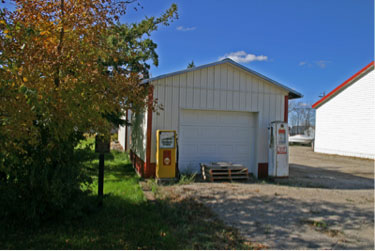
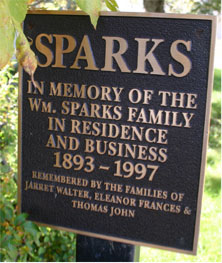

Former Johnson’s Hardware
South Railway Ave.
347.D.1 / 1939
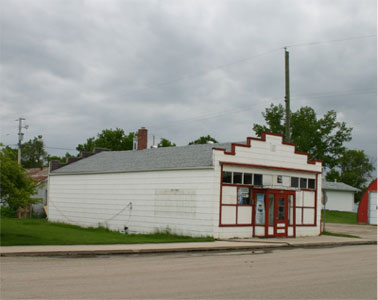
Built by Bain Johnson for his family hardware business.
Over the years it was used as:
Grieve’s Grocery (George Grieve) 1955
Ralph Evans 1976 (Evans Grocery)
Gordon & Gwen Wooley 1979 (Minto Community Market)
It replaced two earlier buildings that housed the Johnson Hardware.
Though much modified it retains its original entrance and false front
and some interior elements
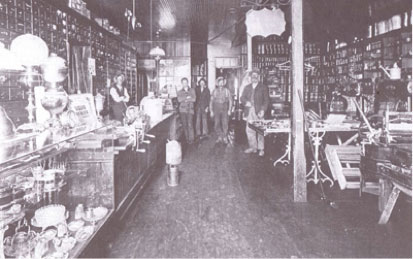
Interior of the “Old” Johnson’s Hardware

Minto
Consolidated School
South Railway Ave.
347.E.1 / 1928
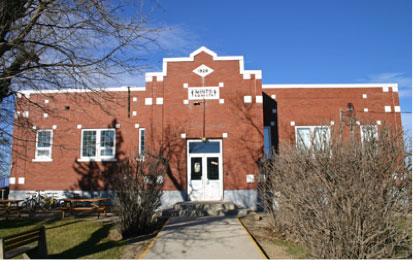
Minto School was established formally in the village of Minto in July
1901, becoming Minto Consolidated School in 1962. The present red-brick
school building dates from 1928. The bell from Minto School is
contained in a monument nearby, as a donation from the Minto and
District Historical Society.

First Minto School – built 1902
http://www.mhs.mb.ca/docs/sites/mintoschool.shtml

Former
Alcester School / Minto Legion Hall
South Railway
347.E.2 / 1887
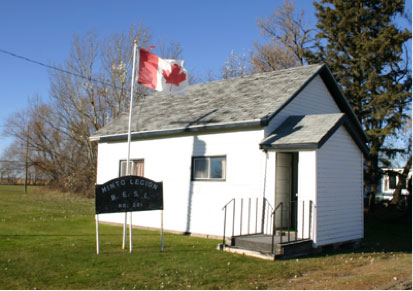
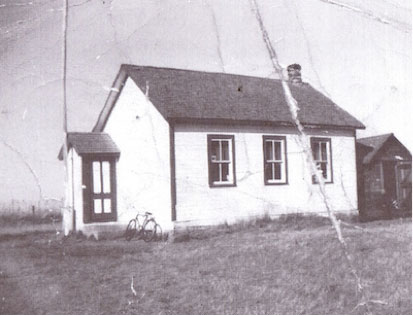
This compact building served as Alcester SD #380. It was moved to
Minto in about 1954 and used as a Legion Hall
http://www.mhs.mb.ca/docs/sites/alcesterschool.shtml

Former Fairfax School
28-6-19
347.E.3
1903

The Fairfax School District replaced this building with a larger one in
1913.
It was used as an extra classroom as late as 1929, and as a
Community Hall. It was moved to a farm near the Riverside Bridge

1913
http://www.mhs.mb.ca/docs/sites/fairfaxschool.shtml

Riverside Park Hall Site
NW 21-6-19
347.J.2 / ca. 1947
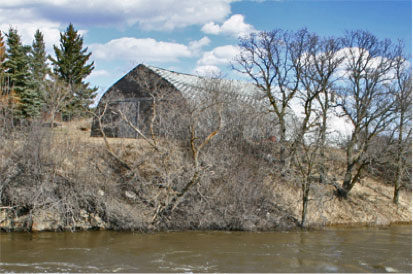
In about 1938 Lisk Campbell established a cable ferry, store and gas
pumps beside the Riverside Dance Pavilion - all known as
Riverside Park. Peter Balen took over in about 1947 and built this
hall. Dancing continued here for a few more decades.
This building is collapsing in 2017.

Minto
Hotel - Former Grout’s Hall
Highway 10. & South Railway
347.J.41
ca. 190
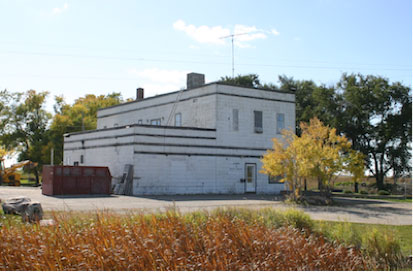
Built on North Railway Ave the building housed groceries and hardware
on the lower level with a Hall on upper floor. The Hall was also used
as a church by Presbyterians. It was later bought by Harry Austin and
moved to south side on Johnson Street as the King Edward Hotel. It was
moved to the Highway location after 1946.
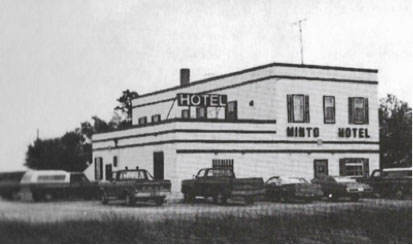
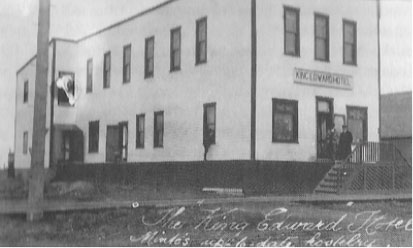

Old Riverside Bridge
NW 21-6-19
Former Crossing - #10 Highway at Souris River
347.M.1 / 1929

Built at a cost of $34,528 by the Winnipeg construction firm of Macaw
and MacDonald, this concrete arch bridge was formerly the primary
crossing for Provincial Highway No. 10 over the Souris River It has
been superseded by a newer bridge to the west but is still used for
local traffic.
This is the second of three bridges to cross the river near this
location. Sheppard’s Ferry served here in the earliest pioneer days.
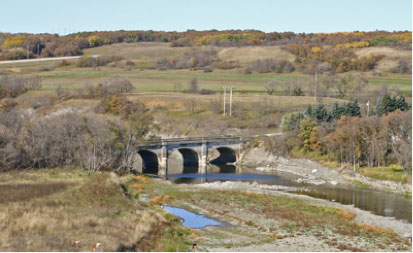
http://www.virtualmanitoba.com/Gallery/RiversideCrossing/index.html

Great Northern RR Ravine Crossing
SE 30-6-19 Heaslip Area
347.M.2 / 1905 - 1936
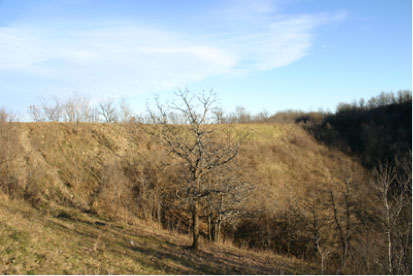
Built by the Brandon, Saskatchewan and Hudson’s Bay Railway – part of
the US Great Northern line.

Construction - trestle bridge – filled in.
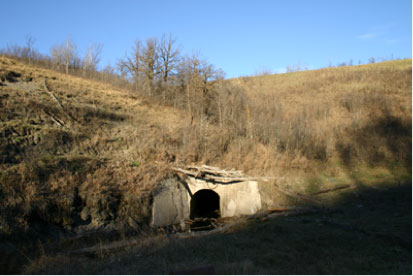
Drainage culvert
http://www.virtualmanitoba.com/historyhikes/HeaslipCrossing/index.html

Former
Heaslip Station & Village Site
SW 18-6-19
347.M.4. / 1906
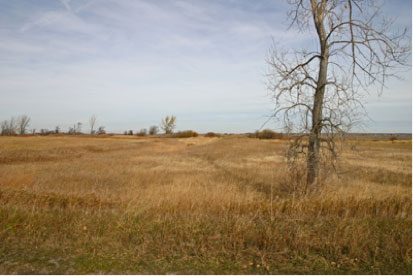
Situated on a rail line abandoned in 1936, the tiny village disappeared
soon afterwards.
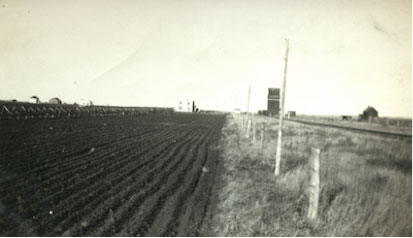
|
|

